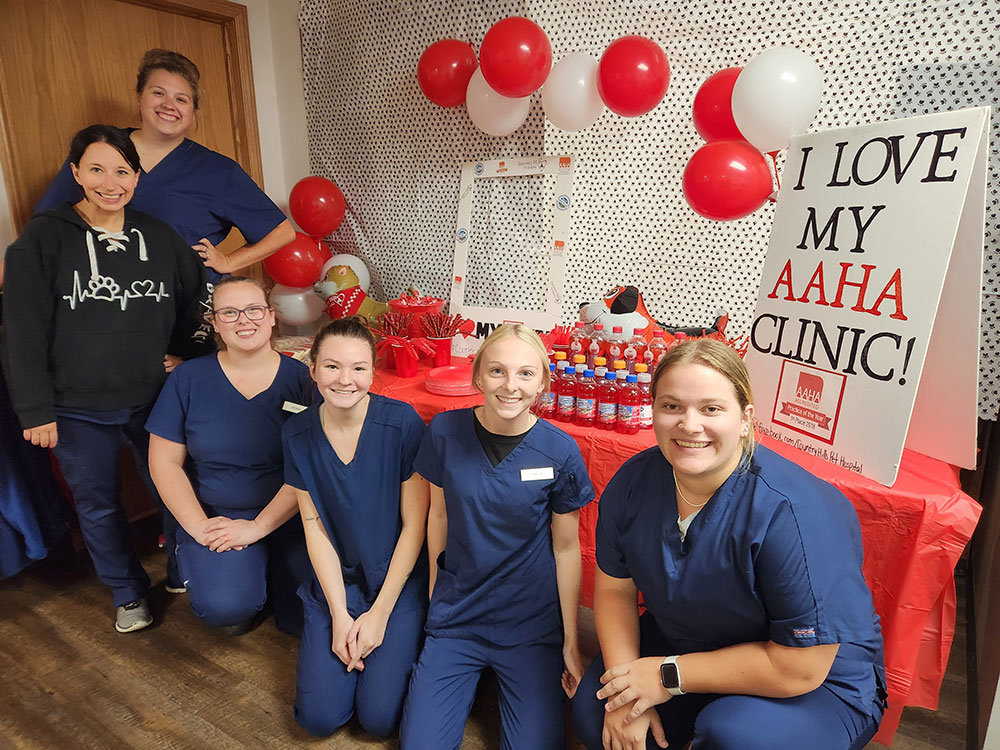What Is AAHA Accreditation?

The American Animal Hospital Association (AAHA) is the only organization that accredits veterinary practices in the United States and Canada. In fact, only 15% of veterinary hospitals undergo the rigorous accreditation process, setting themselves apart from other hospitals. Accreditation is voluntary, which means each hospital that chooses the AAHA accreditation path truly believes in the standard of medicine that our organization upholds.
AAHA accreditation standards
To become an AAHA-accredited veterinary hospital, a practice must meet or exceed hundreds of standards. Standards cover all aspects of veterinary care and business and are constantly evolving to keep up with advancements in veterinary medicine and help hospitals stay at the forefront of the profession. Veterinary hospitals must meet mandatory standards in addition to AAHA’s point-based standards in the following categories:
- Anesthesia — Anesthesia standards are in place to ensure anesthesia is safe and effective for every pet.
- Dentistry — Dentistry standards ensure maximum safety and cleanliness, and mandate that dental cleanings are performed only on anesthetized pets.
- Emergency and critical care — Critical care standards govern how patients and clients are handled and treated during emergencies and hospitalizations.
- Human resources — Human resources standards ensure the back end of the business runs as smoothly and efficiently as the front end of pet care services.
- Laboratory — Lab standards focus on sample collection and handling to maximize the chances of an accurate diagnosis.
- Medical records — Records standards clearly dictate what should be included in each patient’s medical records.
- Pain management — Pain management standards dictate how to assign pets a pain score and which drugs and drug combinations are best used in specific situations.
- Patient care — Patient care covers a broad range of standards, including medical protocols and patient handling.
- Pharmacy — Pharmacy standards ensure medications are stored and organized properly, and proper records are maintained.
- Surgery — Surgery standards are heavily focused on safety and sterility.
Hospitals seeking their first AAHA accreditation often make significant changes to their practice and prepare for months to years for their initial evaluation. If a veterinary hospital receives AAHA accreditation, they must continue to adapt to the profession’s evolving standards and pass re-evaluations every few years.
AAHA guidelines
AAHA-accredited hospitals also follow our guidelines, which are available to all veterinary professionals, regardless of their AAHA membership status. AAHA guidelines are created by industry experts to cover popular and rapidly developing topics and help busy practitioners stay on top of cutting-edge care recommendations. Our goals in providing guidelines are to provide information on relevant topics that benefit the profession as a whole and to assist veterinarians in making the best recommendations for their patients.
The AAHA difference
Since 1933, AAHA’s ultimate goal is to help veterinary professionals provide exceptional care to pets and pet parents. Our efforts are designed to make your veterinarian’s life easier while elevating the care available to your pet. Because accreditation and membership are voluntary, you can rest assured that AAHA-accredited veterinary practices and team members have a strong drive to be the best of the best and truly care about your pet’s health and well-being.
AAHA hospitals are a nationwide network of veterinary practices that operate according to a high level of standards and values. If you are looking for a veterinarian, use our search tool to ensure your pet gets the care they deserve. To experience the AAHA difference, find an AAHA-accredited veterinary hospital near you.



